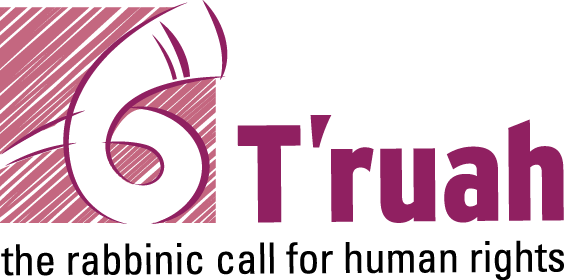Resources

Technicalities, Flames, and Democracy
Before I was a rabbi, I was a lawyer. Most of my legal career was spent assessing almost-inevitably doomed appeals. These were often criminal cases based upon what are popularly called “technicalities.” That work came back to me when I read the story of Nadav and Avihu, to which we return again this week in parshat...
more

Expanding Ourselves Inward
The Passover story recognizes that the journey to freedom involves struggle and suffering. In the midst of our most joyous celebration we acknowledge the pain our liberation caused for others by taking wine out of our cups as we recite the ten plagues. It teaches us that the lesson of compassion is inextricably linked to...
more

Opening the Door at Passover
At the first Passover, we marked our doorposts with the blood of a sacrificial lamb to protect us from the Angel of Death (Exodus 12:23). Although that was a one-time ritual, doors continue to be a central symbol of the holiday. It is a symbol that seems more relevant than ever in an age when nativism...
more
Weapons Sales in Halacha
This two page source sheet has applications both for the issue of domestic gun sales and gun violence and regarding international arms sales, whether by Israel or the US.
more

Midwifing Resistance
For Pesach 2018, T’ruah offers this short, text-and-photos conversation starter about Jewish women’s resistance over the centuries. Bring it to your seder for use with the Four Children, the story of the Israelites’ enslavement, or a springboard for discussing the #MeToo movement.
more

Dealing With Guilt, Getting Closer To Hope
“Some are guilty, all are responsible.” – Rabbi Abraham Joshua Heschel What are we to do about our guilt? How do we take responsibility? Opportunities to feel guilty are everywhere these days. Simply opening Facebook or turning on the television brings us face to face with terrible tragedies and injustices caused by human failures and...
more

Leviticus: The Tipping Point Towards Action
Why was the book of Leviticus placed in the center of Torah? You know that there had to be other options. We all feel the shift. Left on the cliff-hanger at the end of Exodus, we spend 8-10 weeks with nary a hint of narrative. It’s as if the Torah lifts us out of time...
more

Education: The Building Blocks of Justice and Understanding
“In these days, it is doubtful that any child may reasonably be expected to succeed in life if [they are] denied the opportunity of an education,” U.S Supreme Court Chief Justice Earl Warren declared in the famed case of Board v. Board of Education, almost 64 years ago. Decades later, in 2009, Former Secretary of Education Arne Duncan...
more

This Torah Has No Room For Hatred
Like all congregational rabbis, I frequently give eulogies for the deceased, and walk with their families to bury them. Jewish tradition prioritizes remembering the dead. It is a mitzvah gedolah—a great mitzvah—to give a eulogy that breaks the hearts of the listeners and highlights the praiseworthy deeds deceased, while simply forgetting his or her failings....
more

Packaging a Mitzvah
Purim is almost here and in my home we are busy preparing our Mishloach Manot baskets to deliver to family and friends. It’s important to me that we select only the finest products to fulfill this important mitzvah of Purim, so I always look for an American equivalent of Pri Etz Hadar (the beautiful etrog); vine...
more



